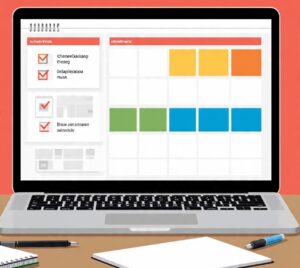Finding ways to fund your education can be challenging, especially when tuition fees and living expenses keep rising every year. For many students, scholarships are the lifeline that makes higher education possible. However, one of the most effective ways to increase your chances of securing financial support is to apply for multiple scholarships rather than relying on just one opportunity.
In this comprehensive guide, you’ll learn step-by-step how to apply for multiple scholarships strategically, avoid common mistakes, and present your application in a way that stands out from the competition. Whether you’re a high school student, a university applicant, or a postgraduate researcher, these tips will help you maximize your chances of success.

Why Apply for Multiple Scholarships?
Applying for a single scholarship is like putting all your eggs in one basket. If you get rejected, you have no backup plan. When you apply for multiple scholarships, you spread out your risk and increase your probability of securing at least one — if not several — awards.
Benefits of applying for multiple scholarships:
-
Higher chances of success – Every additional application increases your opportunities.
-
Better financial security – Winning multiple scholarships can cover tuition, accommodation, books, and even personal expenses.
-
Experience and skill-building – Each application improves your writing, organization, and research skills.
-
Reduced dependency on loans – Scholarships are financial aid you don’t have to repay.
Step 1: Research and Shortlist Scholarships
Before you apply for multiple scholarships, you must know where to find them. Not all scholarships are created equal; some are more competitive than others, and some are designed for specific groups.

Sources for scholarship opportunities:
-
University websites – Most universities list internal and external scholarships for prospective and current students.
-
Scholarship databases – Websites like ScholarshipPortal, Fastweb, and Chegg list thousands of opportunities.
-
Government programs – Many countries have funded scholarships for local and international students.
-
NGOs and private foundations – Organizations like the Fulbright Program, DAAD, and Commonwealth Scholarships.
-
Social media & networking – LinkedIn, Facebook groups, and Twitter accounts dedicated to scholarship announcements.
Step 2: Organize Your Application Plan
When you apply for multiple scholarships, organization is key. You can easily get lost in deadlines, requirements, and documents if you don’t track them properly.

How to stay organized:
-
Create a spreadsheet with scholarship names, deadlines, eligibility criteria, and required documents.
-
Set reminders a week before each deadline to avoid last-minute stress.
-
Group scholarships by similarity so you can reuse parts of your application.
Step 3: Understand the Eligibility Criteria

One common reason students fail when they apply for multiple scholarships is ignoring eligibility rules. Each scholarship has specific requirements — academic performance, nationality, age, course of study, or extracurricular involvement.
Read the fine print before applying. If you don’t meet the basic requirements, your application will be rejected without review.
Step 4: Gather and Prepare Documents Early
Every scholarship will require certain documents, such as:
-
Academic transcripts
-
Recommendation letters
-
Statement of purpose or motivation letter
-
Proof of extracurricular activities
-
Standardized test scores (if applicable)
-
ID documents (passport, birth certificate, etc.)
When you apply for multiple scholarships, you can prepare a master folder with all essential files. Then, customize them for each application rather than starting from scratch every time.
Step 5: Write a Strong Motivation Letter
Your motivation letter is your chance to speak directly to the selection committee. It’s where you explain your academic goals, career ambitions, and why you deserve the award.
Tips for writing a winning letter:
-
Personalize each letter – Even if you apply for multiple scholarships, avoid sending the exact same text.
-
Tell a story – Share your journey and struggles authentically.
-
Show your impact – Mention community service, leadership roles, or unique skills.
-
Be clear about your goals – Explain how the scholarship will help you achieve them.
Step 6: Request Recommendations in Advance
A strong recommendation letter can make a huge difference when you apply for multiple scholarships. Ask teachers, professors, or employers who know you well and can speak about your abilities, dedication, and character.
How to get great recommendations:
-
Request them at least a month before the deadline.
-
Provide your recommenders with your CV and details about the scholarship.
-
Thank them afterwards — it leaves a good impression for the future.
Step 7: Customize Each Application
One of the biggest mistakes students make is sending a “copy-paste” application to every scholarship. While you may apply for multiple scholarships, each committee wants to feel you are genuinely interested in their specific program.
Example:
-
If it’s a STEM scholarship, highlight your science achievements.
-
If it’s a leadership award, focus on your organizational roles and volunteer work.
Step 8: Proofread and Review Before Submission
Spelling and grammar mistakes can ruin your application, even if your qualifications are perfect. Always double-check your documents before submitting. You can ask a friend, mentor, or online proofreading tool to review them.
Step 9: Submit Early
When you apply for multiple scholarships, deadlines can overlap. Submitting early ensures that:
-
Technical issues won’t cause last-minute panic.
-
You appear proactive and well-prepared.
-
You have time to make corrections if needed.
Step 10: Follow Up and Stay Positive
Sometimes, you won’t hear back immediately after applying. Some scholarships take months to process. Follow up politely if the deadline for announcements has passed.
Even if you get rejected, remember that every application improves your skills and increases your chances next time you apply for multiple scholarships.
-
For international scholarship databases, check ScholarshipPortal.
- General Scholarship Databases
-
-
ScholarshipPortal – Global scholarship listings.
-
Fastweb – US-focused scholarship search.
-
Chegg Scholarships – Large database for multiple regions.
-
-
Government & International Programs
-
Fulbright Program – Prestigious US government scholarship.
-
DAAD Scholarships – German government-funded scholarships.
-
Commonwealth Scholarships – UK government-funded programs for international students.
-
-
Tips & Resources for Applications
-
Study in Europe – EU scholarship info.
-
International Education Financial Aid (IEFA) – Financial aid database.
-
ProFellow – Fellowships, funding, and tips.
-
-
Writing Help
-
Grammarly – For proofreading applications.
-
Hemingway Editor – For making essays concise and readable
-
-
Common Mistakes to Avoid

When students apply for multiple scholarships, they often make avoidable errors that reduce their chances:
-
Not tailoring applications – Using the same generic content for all.
-
Missing deadlines – Poor organization leads to disqualification.
-
Ignoring instructions – Some scholarships have very specific formats.
-
Weak personal statement – Failing to connect emotionally with the reviewers.
-
Lack of proof for achievements – Not attaching necessary certificates or references.
Advanced Tips to Win More Scholarships
Once you have mastered the basics, you can go further:
-
Reuse application components smartly – Adapt your essays for different scholarships while keeping core details the same.
-
Apply early in the season – Many scholarships have priority consideration for early applicants.
-
Network with past winners – They can give insider tips and feedback.
-
Track recurring scholarships – Some awards are offered yearly, so reapply if you didn’t win before.
Building a Scholarship Calendar
When you apply for multiple scholarships, having a yearly plan can help you avoid stress. Here’s an example:
| Month | Action Plan |
|---|---|
| January | Search for spring application deadlines |
| February | Gather recommendation letters |
| March | Submit applications for summer programs |
| April–May | Apply for fall semester scholarships |
| June | Review and prepare new applications |
| July–August | Apply for international exchange scholarships |
| September | Submit postgraduate and research grants |
| October–December | Apply for next year’s funding opportunities |
Why Persistence Pays Off
You might get rejected several times before you win your first award. The key is not to give up. Many successful students who apply for multiple scholarships say their success rate increased only after several attempts.
Remember — the skills you develop through these applications are also valuable for jobs, internships, and grants in the future.
Final Thoughts
Learning how to apply for multiple scholarships effectively is not just about filling out forms — it’s about strategy, persistence, and presenting yourself as the best possible candidate. By researching thoroughly, staying organized, customizing your applications, and avoiding common mistakes, you greatly increase your chances of success.
In 2025 and beyond, the competition for scholarships will only get tougher. But with the right approach, you can stand out and secure the funding you need to achieve your educational dreams.
Frequently Asked Questions (FAQ)
1. Is it okay to apply for multiple scholarships at the same time?
Yes, it’s not only okay but recommended. When you apply for multiple scholarships, you increase your chances of securing at least one award. Just make sure you meet the eligibility criteria for each scholarship before applying.
2. How do I stay organized when I apply for multiple scholarships?
Create a spreadsheet with the scholarship names, deadlines, eligibility requirements, and required documents. Staying organized helps you avoid missing deadlines and ensures you submit high-quality applications for each opportunity.
3. Will applying for multiple scholarships affect my chances negatively?
No. In fact, most scholarship committees encourage students to apply widely. The key is to customize each application so it matches the specific requirements of that scholarship, even if you apply for multiple scholarships.
4. Can I use the same essay if I apply for multiple scholarships?
You can reuse parts of your essay, but avoid sending the exact same document. When you apply for multiple scholarships, personalize each essay to match the values and goals of the funding organization.
5. What mistakes should I avoid when I apply for multiple scholarships?
Common mistakes include missing deadlines, ignoring eligibility criteria, sending generic applications, and forgetting to proofread. If you apply for multiple scholarships, avoid these errors to maximize your chances of success.
6. How early should I start if I want to apply for multiple scholarships?
Start at least 6–12 months before your academic program begins. This gives you enough time to research, prepare documents, and submit strong applications when you apply for multiple scholarships.
7. Can I accept more than one scholarship if I win several?
In many cases, yes — especially if they come from different sources. However, some scholarships have rules that limit stacking awards. Check the terms carefully when you apply for multiple scholarships.

Hello my friend! I wish to say that this article is amazing, nice written and include almost all vital infos. I’d like to see more posts like this.
What’s Happening i’m new to this, I stumbled upon this I’ve found It positively helpful and it has helped me out loads. I’m hoping to contribute & aid other customers like its helped me. Good job.
We are a gaggle of volunteers and starting a new scheme in our community. Your website offered us with helpful info to work on. You’ve performed a formidable task and our entire community will be grateful to you.
Your article helped me a lot, is there any more related content? Thanks!